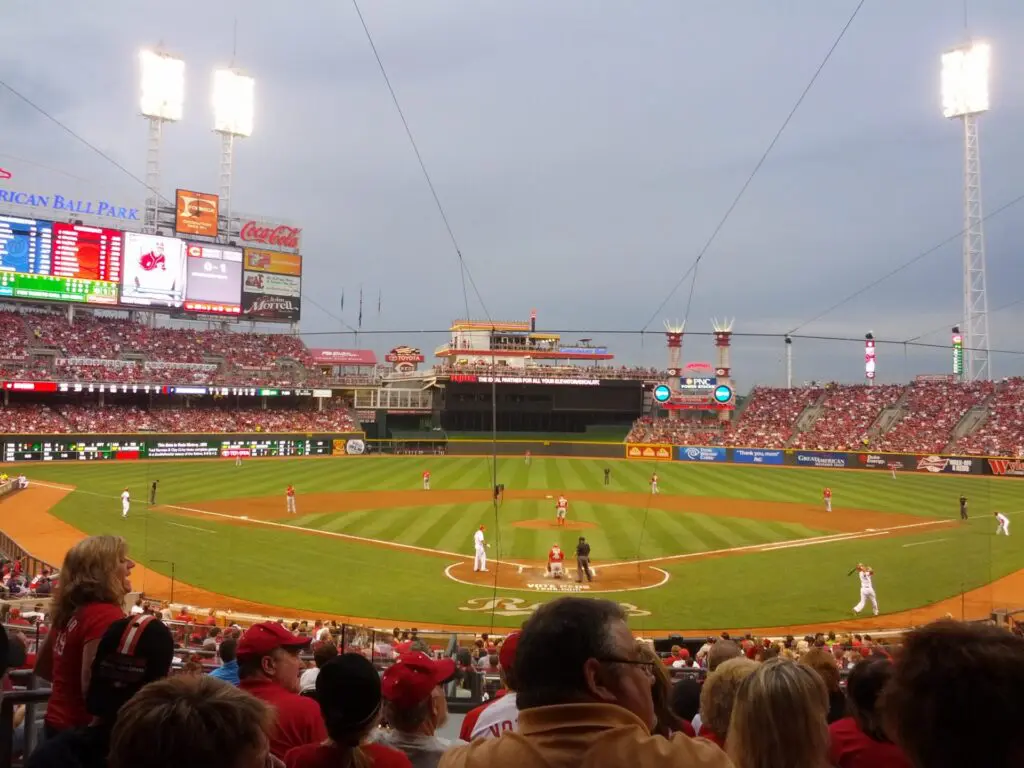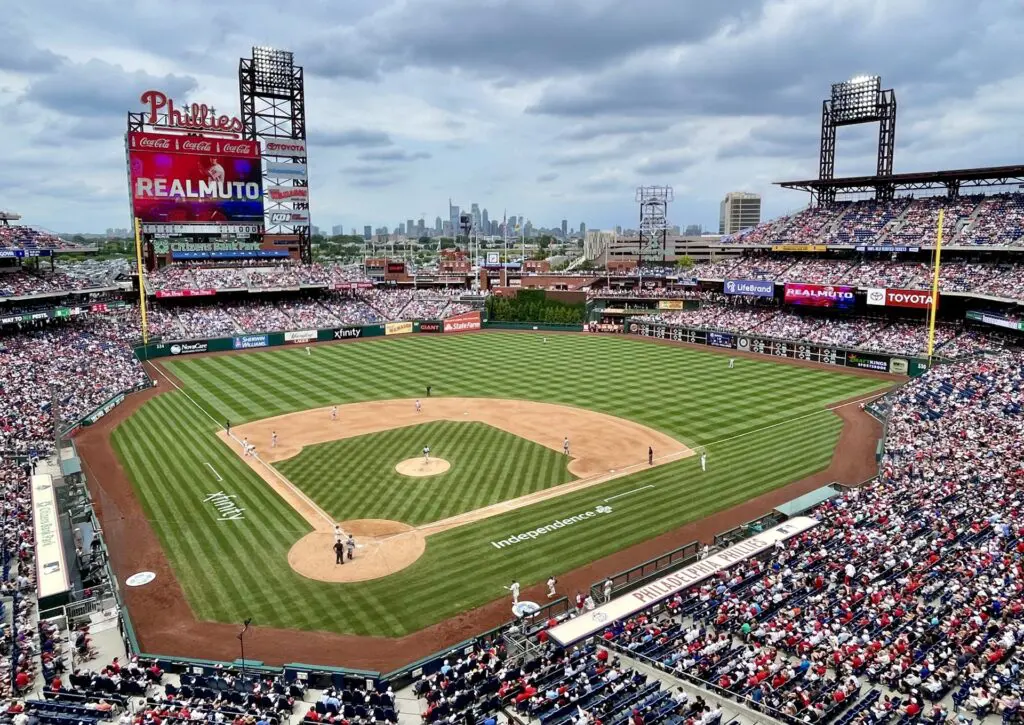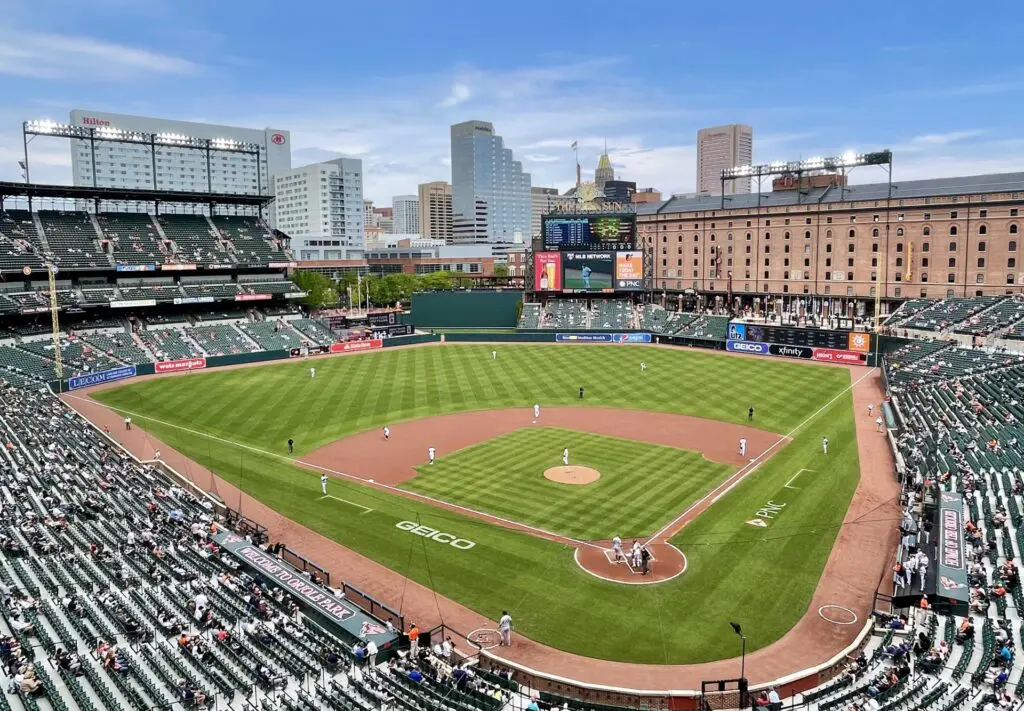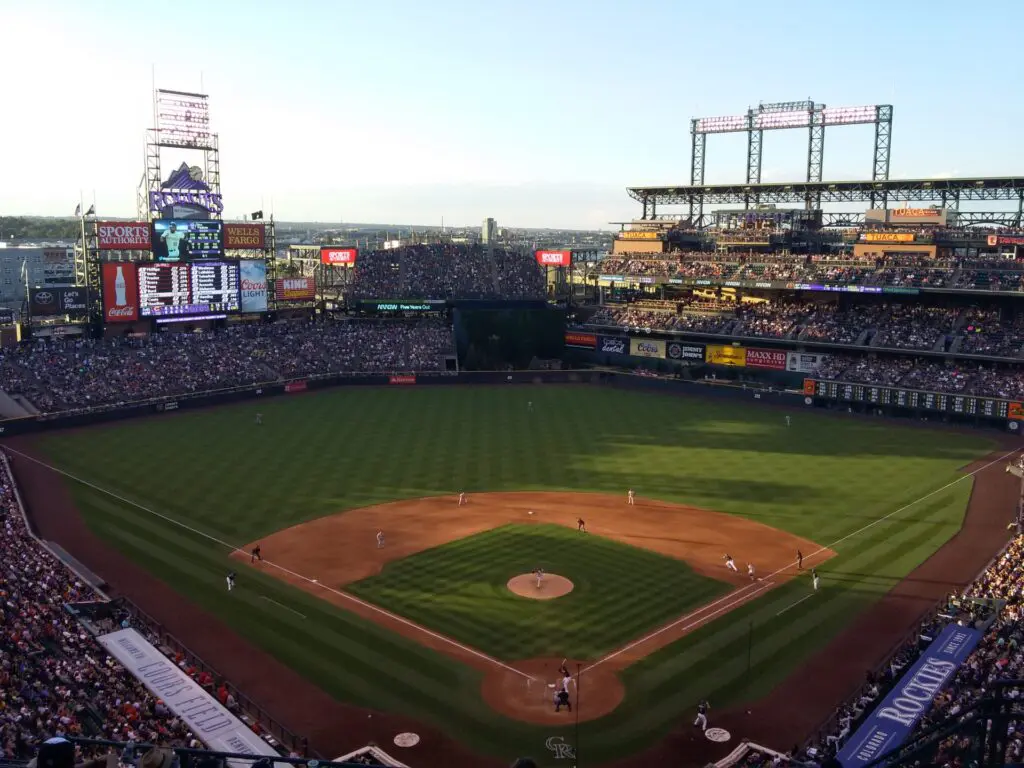Best MLB Stadiums for Home Runs
In baseball, and specifically within the MLB, no two stadiums are exactly alike. And, unlike other major professional sporting leagues such as the NBA, the NFL, and the NHL, baseball continues to be the only sport in the world with no universal stadium dimensions, allowing for each individual ballpark to have its own uniqueness and identity.
And with the home run being one of the most exhilarating, intoxicating, and sought after aspects of the sport, some baseball stadiums are simply better suited and designed to allow for additional home runs.
These so called, “home run friendly” stadiums, not only see more home runs per game but also offer baseball fans an added opportunity and incentive to retrieve the baseball hit into the stands.
So, without further ado, here are the absolute best MLB stadiums for home runs, utilizing data provided by the MLB.
Great American Ball Park

Home of the Cincinnati Reds, the Great American Ball Park has consistently been ranked as one of the best and most home run friendly stadiums in the MLB. With the stadium producing and allowing for more home runs than any other in the league, the Great American Ball Park is the best stadium to view the most home runs.
| Field size | Left Field – 328 ft (100 m) Left-Center – 379 ft (116 m) Center Field – 404 ft (123 m) Right-Center – 370 ft (110 m) Right Field – 325 ft (99 m) Backstop – 55 ft (17 m) |
|---|
Citizens Bank Park

Located in Philadelphia, Pennsylvania, Citizens Bank Park is home to the Philadelphia Phillies and was opened on April 3, 2004. Seating 42,792 fans, the stadium is located at the South Philadelphia Sports Complex near the Philadelphia airport and is adjacent to the Wells Fargo Center, home of the Philadelphia 76ers, and Lincoln Financial Field, home of the Philadelphia Eagles.
| Field size | Left field foul pole 329 feet (100 m) Left field power alley 374 feet (114 m) The “Angle” (left of CF to LCF) 409 feet (125 m) – 381 feet (116 m) – 387 feet (118 m) Center field, straightaway 401 feet (122 m) Right field power alley 369 feet (112 m) Right field foul pole 330 feet (101 m) |
|---|
Oriole Park at Camden Yards

Oriole Park at Camden Yards is the current home to the Baltimore Orioles and the first retro major league ballpark constructed in the 1990’s. These retro ballparks attempt to reference the jewel box ballparks built between 1909-1915 and feature a two-tier grandstand design to take advantage of the steel structural supports and often squeezed inside a city block bringing fans right on top of the action.
| Field size | Left Field Line – 333 ft (101 m) Straight Away Left – 384 ft (117 m) Left Center – 398 ft (121 m) Deep Left Center – 410 ft (125 m) Center Field – 400 ft (122 m) Right Center – 373 ft (114 m) Right Field Line – 318 ft (97 m) |
|---|
Coors Field

Coors Field is located in downtown Denver, Colorado and is the home field for the Colorado Rockies. Opened in 1995, it is located in Denver’s Lower Downtown neighborhood and has a capacity of 50,144 people.
Built at a cost of $300 million, it includes 63 luxury suites and 4,526 club seats and has earned a reputation as a hitter’s park due to the effect of Denver’s high elevation and semi-arid climate on the distances of batted balls. To combat this effect, the outfield fences were positioned slightly further away from home plate and baseballs used in the park have been pre-stored in humidors.
| Field size | Left Field – 347 feet (106 m) Left-Center – 390 feet (119 m) Center Field – 415 feet (126 m) Right-Center – 375 feet (114 m) Right Field – 350 feet (107 m) Backstop – 56 feet (17 m) |
|---|
Rogers Centre

Originally named the SkyDome, Rogers Centre is a multi-purpose fully retractable roof stadium in Downtown Toronto, Ontario, Canada and is situated just southwest of the famous CN Tower near the norther shore of Lake Ontario.
Home to the Toronto Blue Jays, the stadium opened in 1989 at a total cost of $1.04 billion in 2020 dollars.
| Field size | Left Field Line – 328 ft (100 m) Left-Centre Power Alley – 375 ft (114 m) Centre Field – 400 ft (120 m) Right-Centre Power Alley – 375 ft (114 m) Right Field Line – 328 ft (100 m) Backstop – 60 ft (18 m) |
|---|
Dodger Stadium

Dodger Stadium is an MLB stadium located in the Elysian Park neighborhood of Los Angeles, California. Home to the Los Angeles Dodgers, the park was opened in 1962 at a cost of $206 million in 2020 dollars.
The third oldest park after Fenway Park and Wrigley Field, it is also the largest baseball stadium in the world by seat capacity. And while there are plenty of home runs at the ballpark, it is often referred to as a “pitcher’s ballpark”, the stadium has seen 13 no-hitters, two of which were perfect games.
| Field size | Left Field – 330 ft (101 m) Medium Left-Center – 360 ft (110 m) True Left-Center – 375 ft (114 m) Center Field – 395 ft (120 m) True Center Field – 400 ft (122 m) True Right-Center – 375 ft (114 m) Medium Right-Center – 360 ft (110 m) Right Field – 330 ft (101 m) Backstop – 55 ft (17 m) |
|---|
Nationals Park

Nationals Park is located alongside the Anacostia River in the Navy Yard neighborhood of Washington, D.C. and is home to the Washington Nationals. The stadium was completed in 2008 at a cost of $693 million and has a total seating capacity of 41,339.
| Field size | Left Field – 337 feet (103 m) Left-Center – 377 feet (115 m) Center Field – 402 feet (123 m) Right-Center – 370 feet (113 m) Right Field – 335 feet (102 m) |
|---|
Guaranteed Rate Field

Home to the Chicago White Sox, Guaranteed Rate Field is located on the South Side of Chicago, Illinois. Opened in 1991 at a total cost of $137 million, the stadium features one of the highest upper decks in the league.
| Field size | Left field – 330 ft (100 m) Left-center – 375 ft (114 m) (not posted) Center field – 400 ft (120 m) Right-center – 375 ft (114 m) (not posted) Right field – 335 ft (102 m) Backstop – 60 ft (18 m) Outfield wall height – 8 ft (2.4 m) |
|---|
Angel Stadium

Angel Stadium, located in Anaheim, California, is the current home stadium for the Los Angeles Angels and is often referred to as The Big A. And in addition to being the home field for the Angels, the stadium hosts high school and college football games.
The field dimensions (333 feet instead of 347 or 350) were derived from a scientific study conducted by the team. Based on the air density at normal game times, the Angels tried to formulate dimensions that were fairly balanced between pitcher, hitter, and average weather conditions.
The Angels tinkered with those dimensions several times, expanding or contracting parts of the outfield by a few feet, in an attempt to refine that balance.
396 feet (120.7 m) is the shortest center-field in the American League, and tied for 3rd-shortest in the major leagues with Petco Park behind only Oracle Park’s 391 feet (119.2 m) & Dodger Stadium at 395 ft (120.4 m).
| Field size | Left Field – 347 ft (105.8 m) Left-Center – 390 ft (118.9 m) Center Field – 396 ft (120.7 m) Right-Center – 370 ft (112.8 m) Right-Center – 365 ft (111.3 m) Right Field – 350 ft (106.7 m) Backstop – 60.5 ft (18.4 m) |
|---|
Minute Maid Park

One of our personal favorite MLB ballparks, Minute Maid Park is a retractable roof stadium in Downtown Houston, Texas and is home of the Houston Astros. With a seating capacity of 41,168 the ballpark also features 5,197 club seats and 63 luxury suites.
| Field size | Left field – 315 feet (96.0 m) Left-center – 362 feet (110.3 m) Left-center – 404 feet (123.1 m) Center field – 409 feet (124.7 m) Right-center (deep) 408 feet (124.4 m) Right-center – 373 feet (113.7 m) Right field – 326 feet (99.4 m) Backstop – 49 feet (15 m) |
|---|
